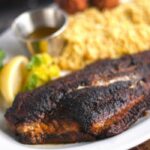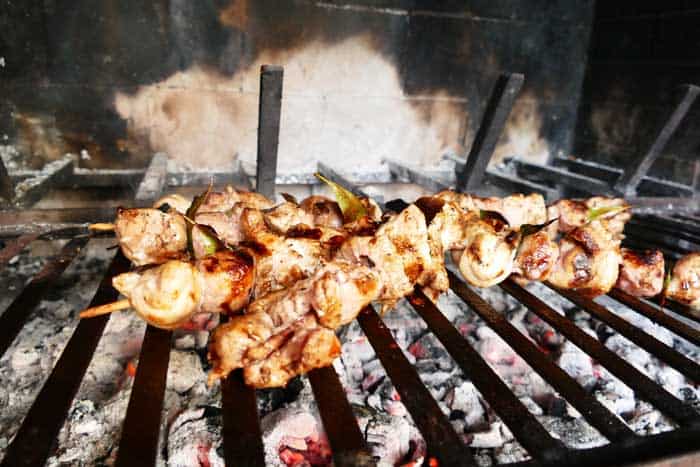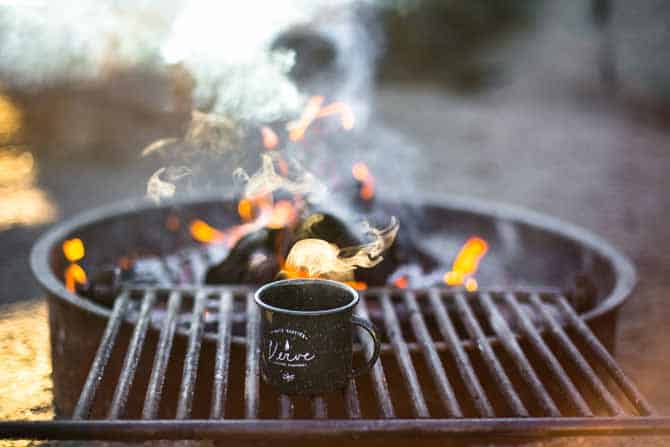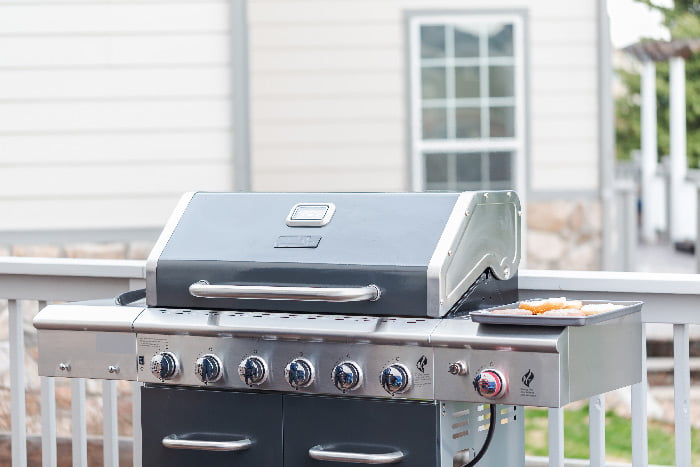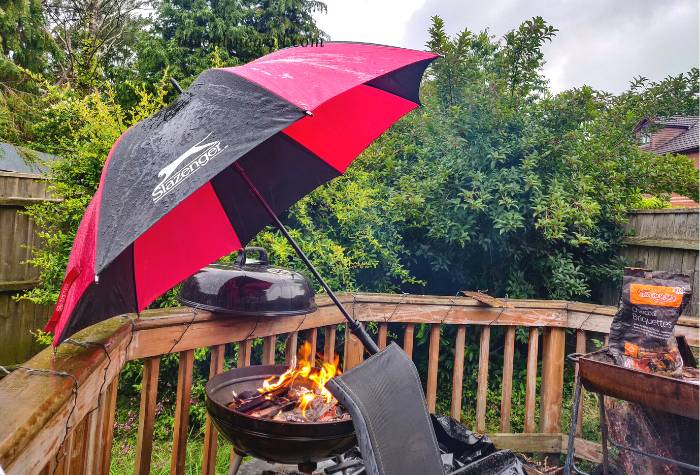Blackened and grilled food are both beloved for their distinct flavors, yet they stem from very different culinary traditions and techniques. So, what sets these two methods apart? Find out everything you need to know about the differences between these popular cooking styles.
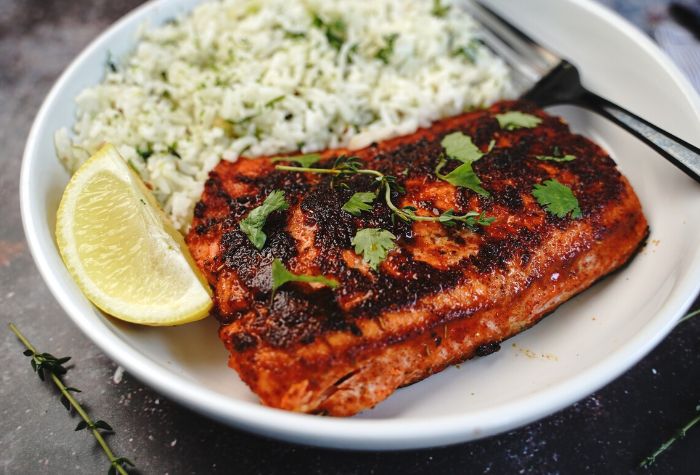
Ever wondered why some foods have a dark, spicy crust while others have those classic grill marks? That’s the difference between blackening and grilling, two popular cooking methods that bring out some amazing flavors in our food. Both use high heat, but that’s where the similarities end.
Today we’ll break down the differences between blackened and grilled food, from their history to the unique flavors they offer. So, whether you’re a grilling pro or spice fiend, discover what sets these two distinct cooking methods apart.
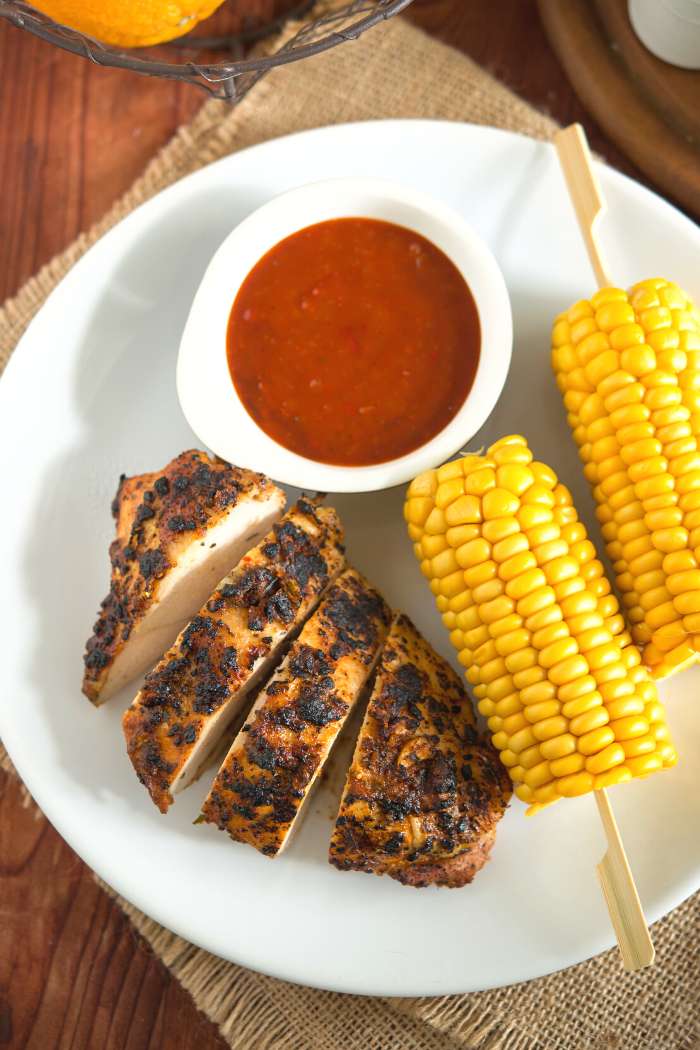
The main differences between blackened and grilled meat can be broken down into:
- The Method: While grilled food is cooked over open flame (typically on a charcoal grill), ‘blackened’ food is heavily seasoned before seared in a cast iron skillet
- The Flavor: Blackened meat carries a bold, spicy flavor from the use of seasoning, while grilled food typically carries heavy smoky notes from the flames
- The Appearance: Blackened food is coated in a heavy black crust created by the blackening seasoning spice blend, while grilled meat carries unmistakable grill sear marks
- The Cuisine: While many different cultures have their own take on grilled food, blackened food is most commonly associated with Cajun cuisine
What is Blackened Meat?
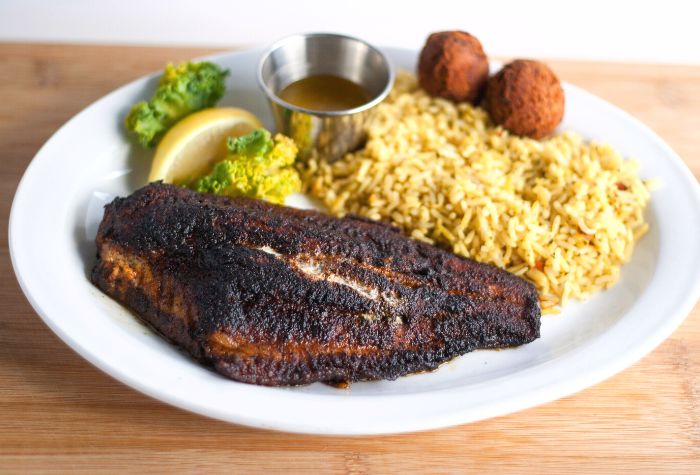
First, let’s get something out of the way: Blackened doesn’t mean burned, although the noticeably dark char on the outside of the meat may have you fooled. Instead, the meat is generously coated in a spice blend that turns into a dark brown, almost black-colored crust once grilled or cooked over high heat.
Blackened food, often associated with Cajun cuisine, involves coating meat in a spice mix of oregano, thyme, chili pepper, garlic powder, and onion powder (although this changes from recipe to recipe). A small amount of butter is used to work as an adhesive for the seasoning while also helping to develop a crust on the meat’s surface.
Traditionally, this blackening seasoning is used on fish, chicken, and shellfish, but over time has expanded to also be used on pork and beef.
What is Grilled Meat?

Besides being a healthier way to cook food (excessive amounts of oil are not required to grill meat), grilling produces a deliciously smoky flavor and caramelized crust due to the Maillard reaction.
There are also numerous ways to grill meat, which is why almost every cuisine has its own range of BBQ grill recipes. The preparation might change cuisine-to-cuisine, but the basic elements of fire and meat stay largely the same.
In Korean BBQ, meat (usually beef) is marinated in sauces before being seared over high heat, while in Turkey, meat kebabs are cooked on a mangal. In the US, grilling is generally grouped together with barbecue, with meat patties, chicken filets, or steaks having the signature grill marks that make them look that much more enticing.
Finally, people on meat-free diets don’t have to miss out on the flavors imparted by grilling! Homemade veggie skewers or grilled corn and capsicum are also known to be backyard BBQ grill favorites.
What’s the Difference Between Blackened and Grilled Meat?
Both blackened and grilled meat are cooked over high heat, producing a juicy, flavorsome bite. However, blackened meat includes an extremely flavorful crust made with a ton of herbs and spices, which often leads to a big production of smoke in the kitchen and leans heavily into charred edges and flavor.
Unlike blackened meat, grilled meat doesn’t have to come with a variety of spices and herbs rubbed in before cooking. Sure, some cooks may prefer to marinate meat beforehand or add a generous sprinkling of some dried herbs before placing the food on the grill, but grilling is generally less spice-intensive than blackening.
Also, blackened meat originated to be prepared in a cast-iron skillet for fast cooking. Because of this, meat slices are often cut thinner (which also provides a nice ratio of crust to center). Once placed on the pan or the heat source, you’ll want to avoid cooking the meat for too long as this can burn the spices and lead to a distinctive bitter taste.
Finally, grilling is generally associated with the preparation of meat over an open flame—whether that’s a charcoal grill or classic barbecue. On the other hand, blackening is done with a generous amount of butter, which can drip into an open flame. Due to this, blackening can be done in an oven or over the stove. This doesn’t mean you can never have blackened meat over an open flame! Due to the rise in popularity of both techniques in recent years, cooks have developed ways to achieve both grilling and blackening for your classic family barbecue.
Blackening vs. Grilling Meats
Chicken
Grilling chicken on a backyard grill provides a smoky and juicy center with signature grill marks on the skin. Meanwhile, when you place blackened chicken on the barbecue, you’ll get a decadent option that’s higher in calories but with a crispy, smoky, crust.
It’s important to only blacken chicken that’s sliced or pounded thinly. Due to the blackening process, the addition of the spice crust can inhibit some of the chicken from being cooked properly, so you’ll want to avoid a cold center and a burned crust by keeping it thin beforehand.
Salmon
Something quite magical happens when you blacken salmon over the barbecue. Salmon is naturally high in omega-3 fatty acids, and when you combine it with a nice spice rub, the flavors really shine. In fact, you don’t need as much oil if you choose to blacken salmon, which can make for a healthier alternative.
For those who prefer a simpler meal, grilling salmon usually involves just adding a spritz of lemon, some herbs, or merely salt and pepper before wrapping it in aluminum foil.
Fish
Reminiscent of alfresco dining and warm summer evenings in Europe, grilled fish lets the naturally subtle flavor of fish come through without overburdening it with extra spices or flavor. Perfect when paired with a side of salad or cheesy potatoes for a French twist, fish can be grilled on the barbecue extremely quickly.
Naturally firm and white fish, like cod, halibut, or haddock, suit the process of blackening as they’re able to keep their shape better. When placed over the barbecue, the formation of the richly spiced crust can add some textural interest to the meal and nicely contrasts with the flaky, buttery center.
Steak
Grilled steak is one of the most popular items in a backyard barbecue, and it’s not hard to see why. You only need a few minutes on each side to create a deliciously golden brown and lightly charred crust with a still-moist center. The natural richness of steak pairs well with the intensely smoky notes imparted from an open flame.
Blackening a steak is an extremely fun cooking technique as, unlike other types of meat like chicken or seafood, steak can be eaten rare or medium rare. Because of this, you don’t have to worry about keeping your steak ultra-thin before placing it on the grill. Simply coat it in the spice mix before searing it to get that almost-burned-but-delightfully-flavorsome outer crust.
How to “Blacken” Food
While the term ‘blackening’ might evoke images of smoke and flames, the process is relatively straightforward. The traditional way to blacken food is by placing it on a cast-iron skillet in the oven, but for those warmer months, blackening food outside on the grill guarantees some extra smoky-charred flavor.
- Get the ingredients you need, including your protein or veggies of choice, a generous helping of melted butter (we recommend ½ to 1 cup), and your spice mix (see below)
- Fire up your grill to high and allow it to preheat for 10-15 minutes
- Place your cast iron skillet directly on the grill
- Dip your food into the butter before placing them back on a plate
- Generously sprinkle or rub your spice mix onto your food, remembering to season both sides
- Place the food into the skillet, making sure to cook them in small batches so it doesn’t burn
- Flip once the side is nicely charred and has formed a crust
- Remove from the skillet and serve with extra butter on the side
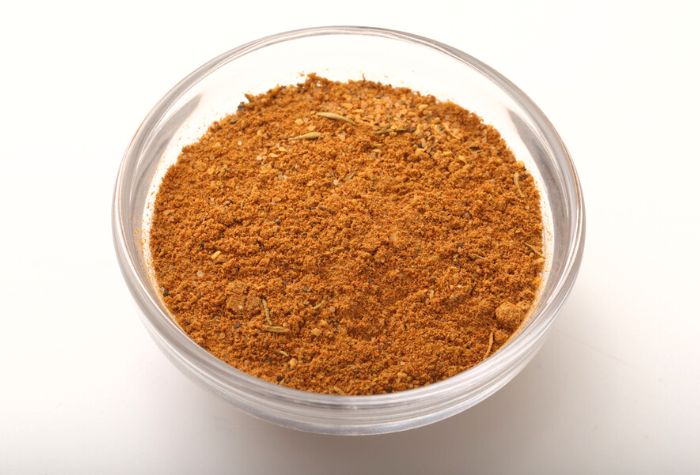
Blackening Seasoning — What is It and How is It Made?
A staple of Cajun cuisine, blackening seasoning is a blend of herbs and spices that’s applied to meat (usually chicken or fish) before it’s grilled or pan-fried. Recipes vary, but generally blackening seasoning features a mix of thyme, oregano, paprika, garlic powder, chili powder, and kosher salt.
This unique seasoning blend yields a spicy and sharp flavor, while the dark crust it forms helps to lock in the moisture from your meat, keeping it juicy and tender.
Once you have prepared your blackening seasoning, coat your meat with it before adding it to the grill over high heat. After a couple of minutes, the seasoning will start to form a dark crust on each side.
